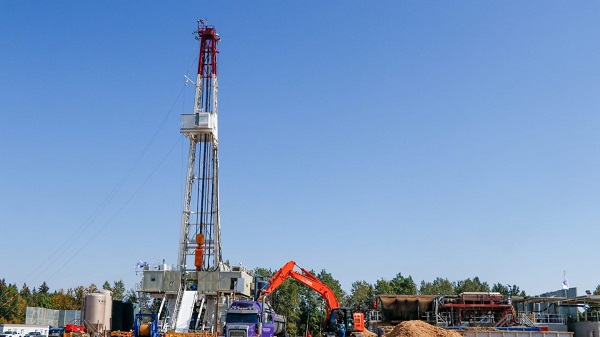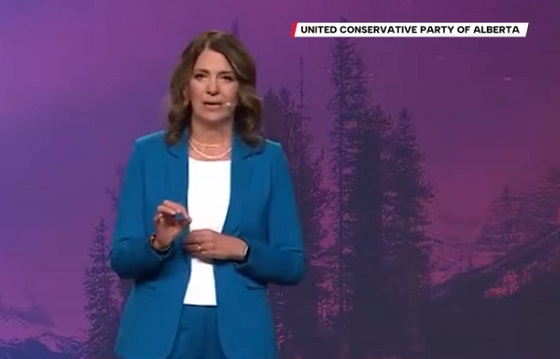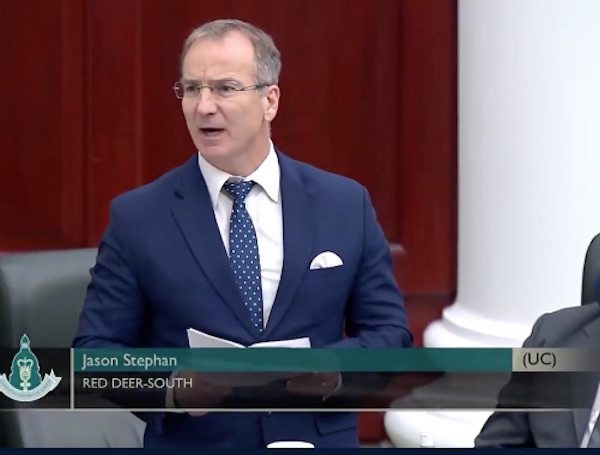Alberta
Alberta reports second COVID-19 death. Three Red Deer doctors test positive after working with dozens of patients. Outbreak at Calgary long-term care facility

From the Province of Alberta
Update 11: COVID-19 pandemic in Alberta (March 24 at 5:30 p.m.)
A second Albertan has died. 57 additional cases of COVID-19 have been confirmed. Total number of cases in the province is 358.
Aggressive public health measures continue to help limit the spread of COVID-19.
Latest updates
- Cases have been identified in all zones across the province:
- 214 cases in the Calgary zone
- 86 cases in the Edmonton zone
- 20 cases in the North zone
- 28 cases in the Central zone
- Eight cases in the South zone
- Two cases where the zone is still under investigation
- Of these cases, 19 have been hospitalized, seven have been admitted to intensive care units (ICU), and two patients have died.
- Up to 28 of these cases may be due to community transmission.
- A COVID-19 outbreak was confirmed last night at the McKenzie Towne Continuing Care Centre in Calgary.
- This has resulted in one death of a resident – the second COVID-19 related death in the province. The individual was a female in her 80s. She developed symptoms on March 22 and died March 23.
- One staff member and two other residents have tested positive.
- There are 11 other symptomatic residents with tests pending.
- The source of the infection is not yet known.
- The number of confirmed recovered cases remains at three. A longer-term process for determining timely reporting of recovered cases is underway.
- Aggregate data, showing cases by age range and zone, as well as by local geographical areas, is available online at ca/covid19statistics.
- All Albertans who have travelled outside of the country, including snowbirds returning home from wintering in the United States and other countries, must go straight home upon returning to Alberta and self-isolate for 14 days.
- This means not going to the grocery store, not stopping at the kennel to pick up their dog, not dropping their RV off for service or storage, and not having family and friends over to visit or going to visit them while isolated. It means going directly and immediately home, self-isolating for 14 days and monitoring for symptoms.
- If symptoms do develop, individuals must self-isolate from all other members of their household for an additional 10 days from the beginning of symptoms or until they are feeling well, whichever takes longer.
- People not experiencing symptoms are reminded they can still go outside, but this must be limited to activities such as walks, where the individual remains two metres away from others.
- A bonspiel event was held in Edmonton March 11 to 14, during which some physicians were exposed to COVID-19.
- All attendees have been contacted and are self-isolating.
- Twelve of the 47 Alberta health-care workers who attended the event have tested positive for COVID-19.
- All of their close contacts from the time they had symptoms, including some patients, are being notified as usual through local public health followup.
- Three of the infected individuals are physicians working in Red Deer.
- From these three cases, although they each worked less than a day while symptomatic, a total of 58 patients and 97 other health-care workers have been or will be contacted as potential close contacts of these three.
- All Albertans need to work together to help prevent the spread and overcome COVID-19.
Community and social services
Funding criteria and forms for the emergency funding to charities, non-profits and civil society organizations are now posted online.
The Emergency Financial Assistance web page now includes information on the federal and provincial supports/programs and a link to the COVID-19 page for more information.
Community and Social Services has suspended in-person service delivery in its program offices and Alberta Supports Centres. Albertans should contact 1-877-644-9992 for more information.
Access to justice
Albertans are asked to not enter courthouses unless they have official business and to first check online for current processes.
Provincial Court of Alberta
Many youth criminal, criminal and family matters are postponed, and the number of operational courthouses and courtrooms is reduced. More information: https://www.albertacourts.ca/pc/resources/covid
Court of Appeal
The Court of Appeal will hear matters by video or teleconference. Changes have been made to filing procedures, timelines and bail check-ins. More information: https://www.albertacourts.ca/ca/publications/announcements/notice-to-public-and-profession—covid-19
Court of Queen’s Bench
The Court of Queen’s Bench will now allow lawyers to e-file documents. More information: https://www.albertacourts.ca/qb/resources/announcements/email-filing-of-court-documents
Information about charitable gaming proceeds
Charitable groups can access information about how charitable gaming proceeds may be used during the pandemic. Contact aglc.ca for more information.
Ongoing compliance checks for bars and nightclubs
AGLC inspectors have visited 953 licensed bars and nightclubs throughout the province since March 17 and are taking enforcement action, including suspending licences, on any licensees that violate current orders to close.
Seniors facilities limiting visitation
Seniors facilities are receiving social isolation and distancing information, and stronger restrictions are being put in place for visitors to long-term and seniors care facilities. Essential visitors will be restricted to a single individual who can be family, a friend, or a paid companion who provides care and companionship necessary for the well-being of the resident (physical and mental health) and/or a single designated visitor for a person who is dying, as long as only one visitor enters the facility at a time. Every visitor will undergo a health screening.
Offers of help
The Alberta Emergency Management Agency Unsolicited Offers Program has been set up in response to growing offers of generosity from individuals and organizations to help with the challenges many Albertans are facing due to the COVID-19 pandemic. Those wanting to help can go to alberta.ca/COVID19offersprogram for more information.
Quick facts
- The most important measures that Albertans can take to prevent respiratory illnesses, including COVID-19, is to practise good hygiene.
- This includes cleaning your hands regularly for at least 20 seconds, avoiding touching your face, coughing or sneezing into your elbow or sleeve, disposing of tissues appropriately, and staying home and away from others if you are sick.
- Anyone who has health concerns or is experiencing symptoms of COVID-19 should complete an online COVID-19 self-assessment.
- For recommendations on protecting yourself and your community, visit alberta.ca/COVID19.
Alberta
Emissions Reduction Alberta offering financial boost for the next transformative drilling idea

From the Canadian Energy Centre
$35-million Alberta challenge targets next-gen drilling opportunities
‘All transformative ideas are really eligible’
Forget the old image of a straight vertical oil and gas well.
In Western Canada, engineers now steer wells for kilometres underground with remarkable precision, tapping vast energy resources from a single spot on the surface.
The sector is continually evolving as operators pursue next-generation drilling technologies that lower costs while opening new opportunities and reducing environmental impacts.
But many promising innovations never reach the market because of high development costs and limited opportunities for real-world testing, according to Emissions Reduction Alberta (ERA).
That’s why ERA is launching the Drilling Technology Challenge, which will invest up to $35 million to advance new drilling and subsurface technologies.
“The focus isn’t just on drilling, it’s about building our future economy, helping reduce emissions, creating new industries and making sure we remain a responsible leader in energy development for decades to come,” said ERA CEO Justin Riemer.
And it’s not just about oil and gas. ERA says emerging technologies can unlock new resource opportunities such as geothermal energy, deep geological CO₂ storage and critical minerals extraction.
“Alberta’s wealth comes from our natural resources, most of which are extracted through drilling and other subsurface technologies,” said Gurpreet Lail, CEO of Enserva, which represents energy service companies.
ERA funding for the challenge will range from $250,000 to $8 million per project.
Eligible technologies include advanced drilling systems, downhole tools and sensors; AI-enabled automation and optimization; low-impact rigs and fluids; geothermal and critical mineral drilling applications; and supporting infrastructure like mobile labs and simulation platforms.
“All transformative ideas are really eligible for this call,” Riemer said, noting that AI-based technologies are likely to play a growing role.
“I think what we’re seeing is that the wells of the future are going to be guided by smart sensors and real-time data. You’re going to have a lot of AI-driven controls that help operators make instant decisions and avoid problems.”
Applications for the Drilling Technology Challenge close January 29, 2026.
Alberta
New era of police accountability

The Police Review Commission (PRC) is now fully operational, giving Albertans a single, independent process to file policing complaints and ensure accountability.
Alberta’s government is putting the province at the forefront of police oversight in Canada with the creation of the PRC. This new commission replaces the current patchwork of police investigating police with one independent body responsible for receiving complaints, conducting investigations and overseeing disciplinary hearings. By centralizing these functions within a single, independent agency, Alberta is ensuring complaints are handled fairly and consistently.
“The Police Review Commission represents a new era in how Alberta addresses policing complaints. These changes are part of a broader paradigm shift where police are no longer seen as an arm of the state, but rather an extension and a reflection of the community they serve. As an independent agency, it is committed to fairness, accountability and public trust, ensuring every complaint is investigated impartially and resolved openly.”
The Police Amendment Act, 2022 laid the groundwork for this new model, establishing a modern approach to oversight built on accountability, consistency and public confidence. The PRC will manage the full complaints process from receiving and assessing, to investigating and resolving complaints related to police conduct, including serious incidents and statutory offences.
“The Alberta Association of Chiefs of Police welcomes the launch of the Police Review Commission as a meaningful step toward enhanced oversight and greater transparency in policing. By ensuring complaints are reviewed fairly and impartially, the Commission will help strengthen accountability and reinforce public trust in Alberta’s police agencies. Police leaders across the province are committed to working with the Commission and our communities to ensure every Albertan has confidence in the integrity of our police services.”
A timely and transparent complaint resolution process is essential for both the public and police. That is why the PRC must complete investigations within 180 days, and if more time is needed, the chief executive officer must publicly report on delays and provide justification. This ensures clarity, predictability and accountability throughout the process. The commission will be arm’s length from government and police services, meaning people can have greater confidence that their complaints will be investigated and resolved impartially.
“Our goal is to build trust in policing by delivering timely resolutions and fair, consistent outcomes that put people first. Every complaint will be reviewed thoroughly and handled with the transparency and respect Albertans expect and deserve.”
The PRC can also initiate systemic reviews related to police conduct or emerging trends without the need for a public complaint, and these reviews must be made public. Together, these measures create a clear, accountable process that strengthens transparency, supports continuous improvement and enhances trust in how police oversight is carried out across Alberta.
“Public safety and the confidence the public has in our police services and service members are incumbent for effective and responsible service delivery. The PRC has been developed so that Albertans may have a responsible and impartial mechanism to voice concerns regarding delivery of policing services in Alberta. I am confident that the PRC will be an inclusive and diverse representation of the communities, so we may better understand the most appropriate and effective way to respond to concerns regarding police services. I look forward to the positive outcomes for the community.”
The commission’s design was informed by engagement with Indigenous communities, law enforcement partners, municipal officials and community organizations, ensuring its structure and training reflect Alberta’s diversity and values.
Quick facts
- The PRC will handle complaints in three categories:
- Level 1: Death, serious injury and serious or sensitive allegations involving all police services in Alberta, as well as peace officer agencies.
- Level 2: Allegations of criminal and other statutory offences involving all police services in Alberta.
- Level 3: Complaints about non-criminal misconduct involving officers employed by municipal and First Nations police services.
- Complaints that fall outside the three categories will be referred to the appropriate bodies or agencies for review.
- The Alberta Serious Incident Response Team (ASIRT) will now operate under the PRC.
-

 COVID-192 days ago
COVID-192 days agoThe dangers of mRNA vaccines explained by Dr. John Campbell
-

 Alberta2 days ago
Alberta2 days agoKeynote address of Premier Danielle Smith at 2025 UCP AGM
-

 Energy1 day ago
Energy1 day agoCanadians will soon be versed in massive West Coast LPG mega-project
-

 National1 day ago
National1 day agoMedia bound to pay the price for selling their freedom to (selectively) offend
-

 Bruce Dowbiggin24 hours ago
Bruce Dowbiggin24 hours agoSometimes An Ingrate Nation Pt. 2: The Great One Makes His Choice
-

 Alberta23 hours ago
Alberta23 hours agoNew era of police accountability
-

 Artificial Intelligence1 day ago
Artificial Intelligence1 day ago‘Trouble in Toyland’ report sounds alarm on AI toys
-

 Business22 hours ago
Business22 hours agoIs there a cure for Alzheimer’s Disease?






